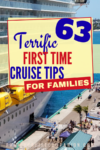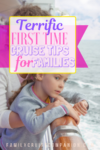A list of first time cruise tips for families. If you’re a first time cruiser with kids, you’ll find helpful tips no matter where you are in your planning.
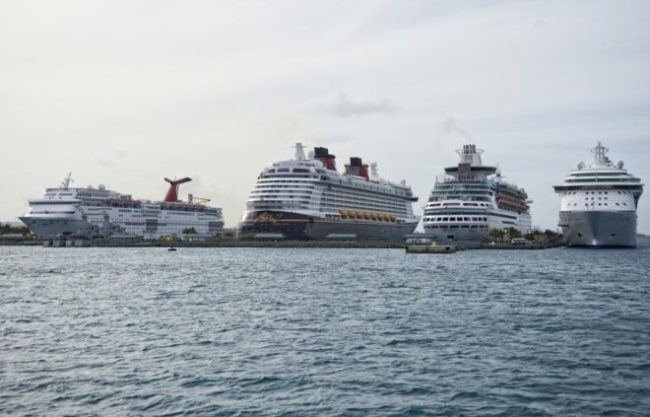
Are you considering or planning to take your kids on a cruise vacation? If you’re a family of first time cruisers, the amount of information available can be overwhelming. Well, breathe easy. We’ve put together this list of first time cruise tips specifically with family cruisers in mind. You will find helpful tips here no matter where you are in your planning process. With plenty of links to relevant helpful resources. (Don’t forget to check out our post on travel hacks for families!)
Related Content: 5 Cruise Mistakes You’ll Really Want To Avoid
TOP TIPS FOR FIRST TIME CRUISERS
This tip list for first time cruisers has five sections that track the five phases of a cruise:
- choosing & booking a cruise
- pre-embarkation (getting ready for the cruise)
- embarkation day
- the cruise itself
- disembarkation
FIRST TIME CRUISE TIPS: BEFORE BOOKING
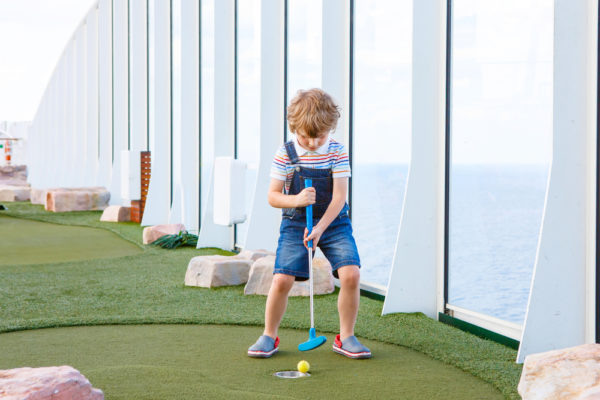
1. Consult with a travel agent who specializes in cruise vacations.
This is a tip that’s often ignored by first time cruisers, but it really shouldn’t be. Do yourself a favor and connect with an experienced cruise travel agent. Unlike some of your other family travel, booking a cruise on your own usually will not save you either time or money. And, you may well miss out on some promotional perks that would add additional value to your trip.
Booking through a cruise specialist can help you plan a better trip because you can make more informed decisions about available options.
A knowledgeable and experienced travel agent can help sort out the various room categories and the related amenities. She can provide guidance on parts of the ship likely to be noisy, crowded, rocky, etc. And, an agent can provide current feedback regarding various cruise lines or specific ships (based on their own experience and recent reports from other clients).
Moreover, travel agents are repeat players, so they are more likely to know the questions to ask or requests to make that you would not think of and the reservation agent is not in a position to volunteer. They will also have better knowledge of and access to potential upgrades.
You will not be charged for using the services of a travel agent.
2. First time cruisers can save money by investigating itineraries on older ships.
Cruises on older ships are usually much cheaper than the sailings on whatever the latest addition to the cruise line fleet happens to be. Often these older ships have been recently refurbished or upgraded and can provide great value.
So, for instance, Royal Caribbean’s Adventure of the Seas first sailed in 2001. Royal Caribbean subsequently refurbished the ship in 2009, and then upgraded it again in 2016. The 2016 upgrades included the addition of a new waterpark complete with water slides, a new two-story golf course, and a flowrider surf simulator. These are amenities comparable to ones found on the newer Oasis class of ships, but without the Oasis class pricing.
Related Post: Try These Top Ways To Stretch Your Family Cruise Dollars

3. If water activities are important to you, confirm the rules for kids for any individual ship under consideration.
For instance, some ships have no water facilities for non-potty trained children. Or, other ships have amazing water parks that may have height restrictions that exclude your kids.
4. Know that the options for character experiences are narrow.
If you are planning on taking your kids on a cruise (particularly small kids), you may be envisioning sailing on a ship with characters. Sadly, the universe of cruise ships that feature your kids’ beloved characters has been shrinking. Currently, only Disney and Carnival have character experiences.
Several Carnival ships feature Seuss-at-Sea which includes character experiences with creatures from beloved Dr. Seuss stories. And, all of the Disney ships feature characters and experiences from a wide range of Disney and Marvel films.
While researching your cruise options, you may see references to Norwegian ships that feature Nickelodeon characters and Royal Caribbean ships featuring characters from popular Dreamworks films. But, sadly, both of those programs have been discontinued. Norwegian ended its relationship with Spongebob and his friends in 2015. And Royal Caribbean said good-bye to its Dreamworks crew earlier this year (2019).
5. If your travel party includes first-time cruisers who are concerned about motion sickness, pay attention to the location of your cabin.
Generally, you will want cabins that have less of a tendency to magnify the motion of the ship. This means you would want one of the lower levels and a room closer to mid-ship. Cabins that are on the highest levels and closer to one of the ends of the ship will feel more of the ship’s motion on the water.
Related Post: 10 Simple Strategies to Conquer Seasickness On Cruises
6. If your group includes first time cruisers concerned about noise, pay attention to what decks your cabin is located near.
You should avoid the decks that are directly below the pool deck, and rooms that are in close proximity to bars, lounges, and other high traffic areas. Also, cabins that are located on the lower decks and toward one of the extreme ends of the ship are more likely to hear the ship’s mechanical noises.
This post may contain affiliate links that could provide a commission to this website (at no additional cost to you). See our Disclosures Page.
7. First time cruisers should understand the difference between “dock” and “tender” and cruising when evaluating itineraries.
As a first time cruiser, you may look at potential itineraries and be puzzled as to certain references to “dock” and “tender.” Also depending on where you’re sailing, you may see references to “cruising.”
- If the port is listed as “dock” that means that the cruise ship will pull into an actual dock at the port to disembark passengers.
- If the port is listed as a “tender” port that means that passengers will disembark in small groups into “tender” boats which ferry them to land. Many times the ship will use its own lifeboats to tender passengers. Or, it may engage ferries from the port, or both.
- And, if you see a reference to “cruising” it means that the ship doesn’t actually stop. Rather, it just cruises by whatever the scenic spot listed. So, basically, it’s a more scenic sea day.

8. Assess how well “tender” ports will (or won’t) work for your travel group.
Ports that require passengers to “tender” to get ashore (as opposed to just walking off the ship) can present special challenges. The tender process often involves steps, small openings, and gaps of varying sizes between the tender boat and the spot you are stepping off or on. Passengers with mobility problems may have difficulty managing the tender process. And, in some instances may have to remain onboard.
You should be mindful of these same issues if you have a stroller. Ideally, you will leave your stroller in the folded position and carry your child aboard (like in a wearable carrier).
In short, there are also some safety concerns associated with tenders. Although millions of passengers tender each year without incident, the possibility for serious injuries remains present.
Also, the tender process typically involves some kind of ticket system or queuing system for getting off the ship. Meaning that you will have to wait for your group to be called before you can leave. Also, remember that the closer you get to all aboard time the longer the lines waiting for tenders returning to the ship will be. Plan accordingly.
9. Assess your options for travel insurance, and purchase it.
Most cruises are fully refundable until the final payment date—typically 90 days in advance of the embarkation date. After the final payment date, any cancellations will come with a monetary penalty that increases the closer you get to the embarkation date – anywhere from 25% to 100 percent. Given the relative expense, and the wide range of life events that can pop up or things that can go wrong in the 3 months before a cruise, purchasing some type of travel insurance is often prudent.
You also want protection as to any medical emergencies that might arise while you are traveling.
Every cruise line will offer its own version of travel insurance. Various travel agents will have other options. Note that not all policies are created equal and you do not necessarily have to purchase directly from the cruise line. In many instances, the cruise line offers may not be your best option. You can likely find better and more comprehensive coverage options by working directly with a major insurance provider.
For more information, check out our post on cruise insurance.
FIRST TIME CRUISE TIPS: BEFORE EMBARKATION
10. If your ship sails to or from a foreign port, identify and confirm all immigration documents you will need.
You should check on documentation requirements soon after you book so that you have plenty of time to arrange for any visas or to search for or replace missing documents.
And, you should make a point of knowing what the requirements are because it may not be obvious from the cruise website that visas are required for certain ports. You should make sure that passports are valid for any length of time beyond your travel dates (typically 6 months).
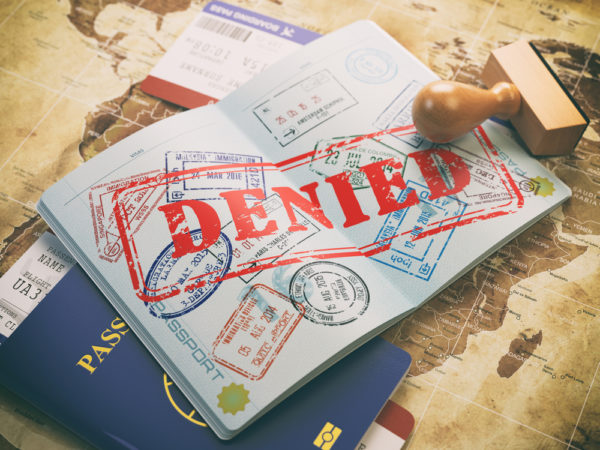
11. First time cruisers who don’t have a passport, still have many fun cruise options.
When a cruise ship itinerary starts and ends in the same U.S. port, that’s considered a “closed loop” cruise. Those cruises do not require passports. You only need proof of your identity, and proof that you are a U.S. citizen. You can find details on the U.S. Customs and Border Protection (CBP) website.
Most Caribbean cruises start and end in the same U.S. port — usually Florida. But this also applies to cruises sailing round trip out of New York, Baltimore, New Orleans, Galveston, Jackson, Mobile and Charleston. You will find literally hundreds of closed loop caribbean cruises scheduled to sail during spring and summer. And those are great options for cruises without passports.
12. Make extra copies of travel docs like passports and birth certificates before you leave home.
Depending on your itinerary, the ship may actually take and hold your passport when you board.
13. If you are sailing with a baby, check on whether you need to bring your own food.
While most cruise lines charge for babies to sail, that doesn’t necessarily guarantee you’ll find the right food on board for your baby. Some cruise lines charge extra. Some don’t provide any at all. And some will have your favorites at no additional charge. Check out our post summarizing cruise line policies on food for babies on cruises.
14. Don’t be afraid to plan independent shore excursions.
First time cruisers may be leery of booking excursions outside those offered by the cruise line. Independent excursions are almost always less expensive than what’s offered by the cruise line. And, established operators also provide a guarantee that you will be returned back to the cruise ship on time. For more information, check out our post on planning affordable shore excursions.
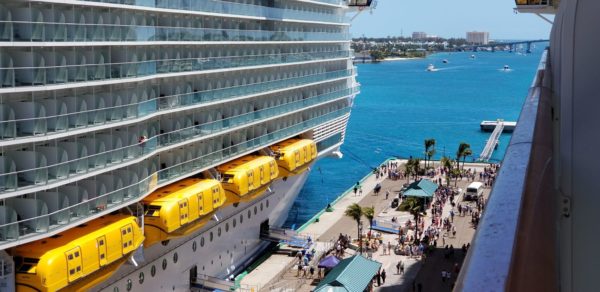
15. If your cruise line offers online check-in, use it.
At some point prior to your embarkation day, you will be provided the opportunity to register online. Registration basically involves providing relevant identifying information required to travel for every member of your party – e.g., citizenship information, emergency contacts.
This will speed up the process of actually boarding the ship on embarkation day. Also, doing this in advance may flag for you some missing information or forms that you may need.
16. Assess pre-embarkation reservation options.
Check whether your ship offers certain iconic attractions that require advanced reservations. If so, and advanced reservations are offered pre embarkation, try to nail something down before boarding. Particularly, if these are new attractions that will be extremely popular.
You will possibly get shut out if you wait until after boarding. One thing to keep in mind is that some attractions are not available when the ship is in port, or may have limited hours for other reasons.
17. Print out luggage tags in advance.
When you register online, you will have the opportunity to print out personalized luggage tags. Or, if you register early enough, you may be able to have nifty colored ones mailed to you. These tags will have specific identifying information regarding your cruise and cabin. Information that’s used to make sure that your luggage makes it to your cabin when you board the ship.
If you don’t print them out in advance, the porters will have blank ones that you can fill out. The drawback is that it slows the process down and creates more room for error.
18. Investigate whether you can bring your own beverages aboard and pack accordingly.
Here’s another first time cruise tip that can save you money. See if your cruise line includes beverages in the things you bring on a cruise. Whether or not you decide to purchase a drinks package for your cruise, beverages on board can get expensive. One way to save money is to bring your own.
Related Content: This Is What You Need To Know About Royal Caribbean Drink Packages
Most cruise lines allow you to bring on board your own limited quantity of non-alcoholic and/or alcoholic beverages. This could include limited amounts of sodas, beers, and bottles of wines. The types and amounts vary by cruise line, and some cruise lines will charge you a corkage fee for opening your wine at a restaurant. You should check with your specific cruise line for the most updated limits.
19. Pack some magnets.
There are several tried and true first time cruise tips that can help make cruise ship rooms more comfortable. One of the easiest ones with high value is to pack some magnets. Because the walls of your cabin will most likely be metal, you can bring and use magnets as a great way to organize materials – messages, swim goggles, cruise lanyards, etc.
And you don’t necessarily have to buy special ones just for your trip. You probably have some magnets around your house that could work just fine.

20. Pack your own common OTC medications.
A common first time cruise tip concerns reminding you to pack your prescription medication. But, you should make a point of packing whatever medications you think you might need, not just prescription medications. While you might be able to find some on board, it will likely be at a premium price. And, there’s no guarantee they will have what you want when you want. Ship stores often run out of items at odd times.
21. Pack something for dirty laundry.
Pack some travel laundry bags with you. You can just drop them at the bottom of your closet and fill them as you go along. This helps keep your stateroom organized. It will also help with your packing when you get ready to return home. Whatever bags you bring will be better than what you will find in your stateroom. The bags that you typically find inside the closet are paper, and they don’t hold up well.
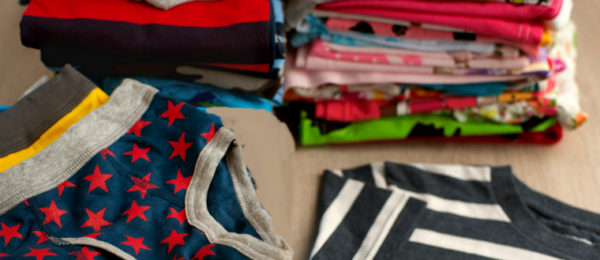
22. Decide on laundry plan in advance.
First time cruisers may wonder why you should even care about your family laundry on a cruise ship. Between excursions, the pool, potential sweaty activities, changing for dinner, and the occasional formal night, you could easily change clothes two or three times a day.
For a seven day cruise with a family of four or five, that equals lots of clothes! So, making a laundry plan is a first time cruise tip that can substantially reduce your amount of family luggage by reducing the overall amount of clothes that you pack by planning to do laundry on your cruise.
Hand washing some or most items is always a viable and cheap option. Some, but not all, cruise lines also offer self-serve laundry rooms that are relatively inexpensive, and in some instances, may be complementary.
Not surprisingly, all cruise lines offer an onboard laundry service in addition to traditional dry-cleaning. Unfortunately, these services can be costly.
23. A power strip or outlet expander is a must-have cruise accessory.
You will also want to bring something to maximize the usability of the electric outlets. There will not be many, and likely only 1 or 2 will be readily accessible. A family of four with a variety of tablets, phones, and other devices will need a little help, so pack an outlet expander. One that does not have a surge protector. Check out our recommendations for affordable best travel power strips.
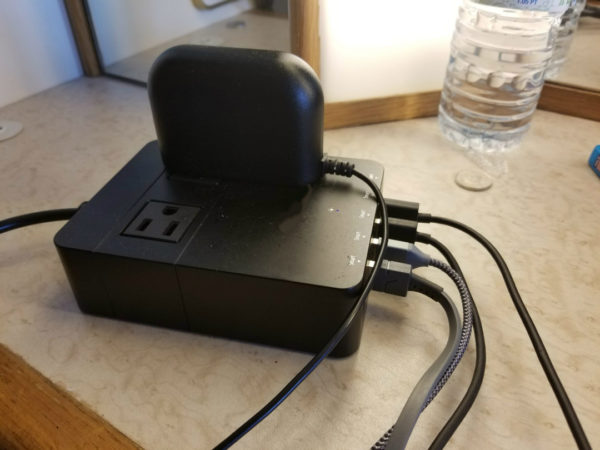
24. First time cruise tip: You don’t need to pack beach towels or hair dryers.
These two items can be found on every cruise, so save the space in your luggage: beach towels and hair dryers.
The cruise ship will have an abundance of freshly cleaned beach towels that you can use on and off the ship. But, don’t forget to return them, otherwise, you will be assessed a penalty fee.
As for hair dryers, most cruise ships provide hair dryers. You will most likely find one near the vanity/desk area in your main cabin. It won’t necessarily have all of the features you are used to. Or, be all that strong. But it does get the job done.
25. Don’t pack a clothes iron or steamer.
You will not be permitted to have an iron or steamer in your cabin. These are considered fire hazards, and they will be confiscated if found. The ship will offer pressing service for a fee. Another alternative is to pack some type of wrinkle-away spray.
FIRST TIME CRUISE TIPS: EMBARKATION DAY
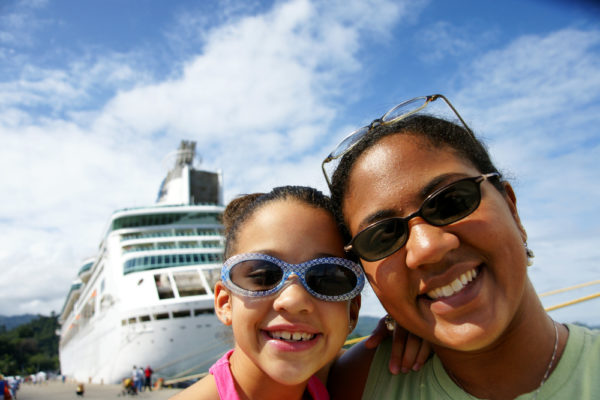
26. Pre-arrange for a ride from the airport (or hotel) to the port.
This is a first time cruise tip that might cost you a little more money, but it’s worth it. Regardless of whether you fly on the same day or the day before, make advance airport transport arrangements. You can find recommendations and reviews for such services through simple Internet searches.
Even though this may be a little more expensive than a regular taxi, it is worth it. You can skip the long cab lines, make sure that you have a vehicle sufficient to transport the right number of people and luggage, and start off your trip a little more comfortably.
27. Pack an embarkation day carry-on bag
Once you arrive at the pier, someone will be there to take charge of your luggage. As you watch all of your bags being wheeled away on giant carts with hundreds of other bags, you should assume that you will not see your luggage again for several hours. So, you should plan to keep any essential items or valuables with you in a carry on cruise bag.
Also, you may not be able to get into your room right away, so you should consider packing a swimsuit and sun items in a day bag that stays with you.
28. The baggage handlers at the port do not work for the cruise line.
This is the last time that you will see the person handling your luggage, so if you are inclined to provide a tip, you should do so now.
29. Have snacks on hand for embarkation day.
The timing of your embarkation can make food options tricky. It could be that the dining areas are not open or are about to close (either due to regular hours or in anticipation of the mandatory muster). For those that are open, they could be jam-packed because of thousands of people boarding in a short space of time. Pack a snack to tide you over.
30. Check out the embarkation day deals on board.
And, if you didn’t make prior arrangements, check for promotions on the following:
- internet packages
- photo packages
- beverage packages
- spa packages
- specialty dining packages
31. Read all the paperwork you find in your stateroom.
When you first get into your room on embarkation day, you will likely find some papers or envelopes waiting for you. Be sure to look through it all and make sure you know what it is. It could be tickets to prepaid shore excursions. Or, an invitation or information about a Roll Call that you signed up for. There may be notices about special offers and promotions or invitations to other events.
At a minimum, you will find the ship’s newsletter for that day which will let you know what activities are going on that evening and what the opening and closing hours are for various venues
32. Plan to go to muster drill. It really is mandatory.
Within the first 24 hours of sailing, the ship will have a mandatory muster drill. All passengers are required to attend, and all dining venues and other distractions are shut down. If you fail to turn up at the muster, someone will likely be dispatched to find you, and the other passengers will be annoyed for having their wait unnecessarily extended.
First time cruisers should pay particular attention to the ship’s protocol for reuniting children with their parents during an emergency.

33. Make plans for special occasions.
Basically, if you are sailing during a period when you would usually be observing or celebrating some special event, you should check on whether you can celebrate or observe while on ship. And, if so, you can go ahead and make any necessary reservations.
For instance, if you are celebrating a birthday, anniversary or other event, it may be possible to order a cake. Or arrange for other types of recognition. But you need to figure out what your options are and make advanced arrangements.
34. Treat your room key like a credit card.
Your cruise card serves many important purposes. It is the key to your stateroom. You are required to swipe it at security every time you exit or board the ship (and your photo will pop up on a security screen so that security can confirm you are who you say you are). And, the card is used for any and all purchases made on-board.
Typically, your cruise card is the sole currency used on-board. No cash or credit cards are used. Basically, you will be running a tab throughout your cruise, and you will settle up at the end.
35. Treat your kids’ room key like they have your credit card.
Kids’ key cards also have the ability to charge to the room. So, for instance, purchasing game credits at an arcade, candy, snacks, toys at an onboard shop, premium ice cream. The purchase option can be turned on or off. Cruise lines differ on whether the default setting when the cards are issued is at on or off. So you should confirm that as soon as you receive the cards.
If you intend to allow spending privileges, you should have a talk about limits and expectations. Basically, your child will be running around with a copy of your credit card.
You should specifically discuss whether your child is allowed to pay for items for other kids – new friends – on board. Kids can easily run up sizable bills in the arcade or candy shop treating their new friends that they made on board.
36. Go to the kids’ club open house.
On the first day, the ship’s kids’ club will hold some type of open house hours. You should take your kids to visit the open house. This will give you the chance to register and check out the facilities. And it’s a chance for you to have a more relaxed conversation with the folks who work in the club. It will also give your kids a chance to start making friends.
If you are cruising as a single parent, checking out the kids’ club should be at the top of your first day “to do” list. If you want to plan some of your own activities, you need to nail down exactly what your childcare options will be. In some instances, there may be a reservation system in place, so you want to nail that down early.
37. Make any reservations for popular attractions and activities on the first day.
Here’s a first time cruise tip that you shouldn’t overlook or put off, even if you’re tired, or think you have other fun things you want to do on your first day. You should make sure that you have any and all important reservations nailed down. If you were able to book some key stuff before boarding, then great. But if there were things that you weren’t able to book in advance, and you know that you want to do them, you should book them on the first day.
Spots can and do fill up quickly, and very popular experiences can be sold out for the entire cruise on the first day. This is not an exaggeration. For instance, sea day appointments at the cruise spa often sell out before the end of the first or second day. And this also applies to “free” events that require reservations.
Key things to nail down:
- that you have a dinner plan for every night
- special activities for sea days
- spa appointments
- iconic attractions – like go-karts, laser tag
- private island experiences
- show tickets
38. First day make dinner plans for every night.
Here’s a first time cruise tip that you shouldn’t overlook or put off, even if you’re tired, or think you have other fun things you want to do on your first day. That’s why it’s getting its own special call-out. At some point during your first day on the cruise, make sure that you have a plan for dinner for every night of your cruise.
If you intend to eat during a fixed seating in the main dining room every night, that’s great because you have plan. But, if you are on a dining plan or a cruise ship that requires reservations, then the best time to do so is the first day (if you weren’t able to do it online before boarding). The best venues and the best time slots fill up very quickly.
Note that you don’t have to do this on the phone. You could make reservations in person as you are walking around the ship. Or, the ship may have a designated location where you can make all of your reservations at once.
If you have any concerns or preferences about what time you eat and where, then you try to nail that down as soon as possible. Slot can fill up early and you may be left with left desirable options at really inconvenient times.
39. Unpack fully.
Once your luggage arrives at your cabin, you should plan to unpack fully, and you should encourage all family members to do so as well. Everyone will be much more comfortable if you are not continually pulling suitcases out to look for things. Once your bags are empty, you can place them under the bed.
40. Review safety rules/procedures with kids.
You should make a point of showing your child what the ship crew and officers look like. Any distinguishing characteristics like everyone has a name tag or a special hat. Guest services will be in a centrally located spot, so as you walk by, point out where it is. Depending on the age of your child, you could also point out the house phones.
Instruct children to never go into the stateroom of people who are not in your travel party. This presumptively includes the staterooms of other children (unless you have had the opportunity to meet the other child and his or her family).
If your children have freedom to move independently around the ship, they should keep you apprised of their plans (and let you know if the plans change). You should have some plan for regular check-ins – whether leaving messages in the cabin or meeting up at specified activities at specified times.
Related Post: 18 Simple Tips For A More Peaceful Embarkation Day
41. Have a family communication plan.
You should work out some method of communicating on-board. Consider working out a schedule at the beginning of the day (perhaps by highlighting a cruise planner), and then have pre-arranged meeting times and places. For instance, meeting up for a meal or for a scheduled group activity.
42. Think long and hard about taking walkie-talkies.
Walkie talkies are allowed on cruise ships, and they can be very popular with first time cruisers. But, they are often better in theory than in execution. Such devices can be bulky, burdensome, and hard to hear in some locations.
FIRST TIME CRUISE TIPS: DURING YOUR CRUISE

43. Bring your own hand sanitizer and use it liberally.
Some folks may think that this is an odd item to include on a list of first time cruise tips, since cruise ships typically have sanitizer dispensing stations throughout the ship. You’ll most likely find them outside every eating venue, near every bathroom, outside large gathering places (like the theater or casino). And, you’ll also see them as you enter and exit the ship.
Even so, take some of your own anyway. The dispensers frequently run out or may not be accessible when you need them. Plus, they don’t travel with you when you travel in port. Travel size sanitizer or similar wipes (with high alcohol content) can be particularly useful when traveling on tour buses or visiting ports.
44. Be prepared for frequent handwashing.
 First time cruisers are often concerned about potential outbreaks of norovirus. Fortunately, such outbreaks do not happen often. But, sadly, when they do, they can be quite ugly. The best defense against norovirus is frequent hand washing with soap and hot water. It is the actual rubbing of the hands under running water that washes away the virus. If you have sensitive skin, consider bringing your own hand soap.
First time cruisers are often concerned about potential outbreaks of norovirus. Fortunately, such outbreaks do not happen often. But, sadly, when they do, they can be quite ugly. The best defense against norovirus is frequent hand washing with soap and hot water. It is the actual rubbing of the hands under running water that washes away the virus. If you have sensitive skin, consider bringing your own hand soap.
A first time cruise tip if you have kids: if your kids are used to foaming soap (rather than bar soap) bring some for your cabin bathroom. You don’t want any unnecessary barriers to good handwashing.
Experts often say that you are no more likely to catch norovirus on a cruise ship than when you are on land. While this may be true, the consequences of being sick on a ship are more severe. Being confined to your bed for a few days at home vs being quarantined for 3 days of a 7 day cruise.
45. Those crew members near the pool and water activity areas aren’t necessarily life guards.
 This fact may be surprising to first time cruisers, but few cruise lines employ actual lifeguards. Lifeguards have only been a recent addition to cruise ship swimming pools, and they are still not a common feature. A “comprehensive” list of cruise lines that have lifeguards consists of three lines — Disney, Royal Caribbean and Norwegian.
This fact may be surprising to first time cruisers, but few cruise lines employ actual lifeguards. Lifeguards have only been a recent addition to cruise ship swimming pools, and they are still not a common feature. A “comprehensive” list of cruise lines that have lifeguards consists of three lines — Disney, Royal Caribbean and Norwegian.
A large cruise ship usually has thousands of personnel performing various functions designed to enhance your vacation experience. However, very few – if any – of them will be focused on your safety around the pool.
Just because you see someone who appears to be “on duty” walking around the pool area, do not assume that person is a lifeguard. That person may be a monitor, attendant, or someone who is focused on attending to waterpark activities. They generally assist guests with non-urgent issues and enforce relevant rules.
While some of the rules promote water safety for kids, these crew members are not necessarily professionally trained to aid people in distress. And, more important, the focus of their job is not to actively watch the pool area for people in distress.
While drownings on cruises do not occur frequently, it is still something that can and should be avoided. Relaxing in a fun family-filled pool sailing across the ocean may seem like a relatively safe venue, but some vigilance remains necessary. Brush up on some basic pool safety tips and water safety for kids.
46. Always stay on ship time.
First time cruisers should be aware that “ship time” can be different from location based time. Sometimes ships don’t adjust the time on board when traveling across different time zones. And, for scheduling purposes, the ship always runs according to ship time, and you should too. While this first time cruise tip is most relevant when you leave the ship during port calls, it’s easier to plan to stay on ship time both on and off the ship.
First time cruisers should also be mindful that “ship time” may not be the same for all cruise ships in the same port. Different cruise lines have different rules about how they set ship time.
Relying on electronic devices that automatically reset to local time or conferring with other travelers you see out and about will not be a reliable way of keeping track of time. The best solution is to have an analog watch that will always stay on ship time. Another option could be setting an alarm on your phone based on the number of hours you want to be away from the ship (not based on the clock time).
47. Always confirm “ship time” and “all aboard” time before you step off the ship.
On port days, as you depart the ship, there will be an “all aboard” time posted (one for crew and one for passengers). You should make sure you know it. And, when a ship departure time is posted, it will always be posted based on ship time. So, you should confirm that whatever clock you are using is on ship time before you leave the ship.
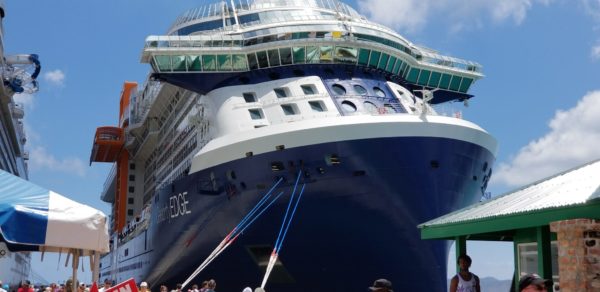
48. If interested in photos – get the photo package and max out.
Purchasing copies of these professional photos can be quite pricey– either as prints or as digital files. Typically, a single print can range from $10-$20 or more. These overall costs can be reduced through purchasing photo packages. These are packages that allow you to purchase either a certain number of prints/files or copies of all of the prints or files or both.
You will often see some type of an all inclusive package that includes all prints and/or all digital files for around $100-$300. If you purchase a package, you can maximize the value. Since all photos are included, have everyone take photos at every opportunity.
An all-inclusive package covers every photo that includes any passenger registered to your cabin. So take them at every opportunity. And, if traveling with friends or family in another cabin, you can take photos together and share costs.
49. Check out the cruise line’s app.
Depending on which cruise line and ship you are sailing, you may have access to an App that you can download to a smartphone or tablet. It may, or may not, actually be helpful.
Some of the really helpful ones will have all of the event timing information that’s available in the ship newsletters. And may have options that allow you to make reservations for dinners, shows and the like. They may also let you see your ongoing room charges. Or, track what different members of your party want to do at different times.
And, some apps may provide access to free or low cost messengering services that allow you to exchange text messages with other guests on board. Then, on the other side of the spectrum, you could find that the app is just a waste of space on your phone.

50. When leaving ship, have currency in small denominations.
Cash in small denominations always comes in handy during port calls. Whether you plan to use U.S. dollars or local currency, have some small bills or coins on hand. This will make it easier to make small purchases, hand out tips as needed, navigate taxis, etc. Bring some money that you can use for tips. For instance, the guy who sets up the beach umbrella(s) for your family. Or, perhaps for the bartender or server for drinks.
Often small merchants or vendors will not have sufficient change to accommodate transactions with larger bills. Having access to small denomination bills also increases your flexibility to haggle and negotiate local purchases, in situations where that’s appropriate.
If you are sailing in Mexico or the Caribbean, using U.S. dollars will be fine. You should be able to get change at guest services or in the casino.
51. Take water with you when leaving ship during port days.
Whether you will be at the beach or in the city, it is always a good idea to have a bottle of water on hand. This recommendation applies regardless of the climate or weather conditions. Hot and sunny, or rainy and chilly? Take the water anyway.
This makes sure that you have something you know is safe to drink. The amount you need can vary based on your expectations for the day. But you should take at least one bottle – even if it is a small one.
52. Take a copy of the cruise ship newsletter with you.
Every evening you should receive a copy of the ship’s newsletter in your cabin. Take it with you if you leave the ship. If needed, you can get extra copies from your stateroom attendant, or guest services.
The daily newsletters contain lots of useful information specific to individual port calls. For instance, they usually include a map of the port, or at least the area around where the ship docks. They have information about the ship’s agent in port in case of emergencies.
They may also include practical information about the port, such as how much you should expect to pay for a taxi, or travel times to common destinations. And, they have that very important information about when to get back on ship, so you aren’t relying on memories.
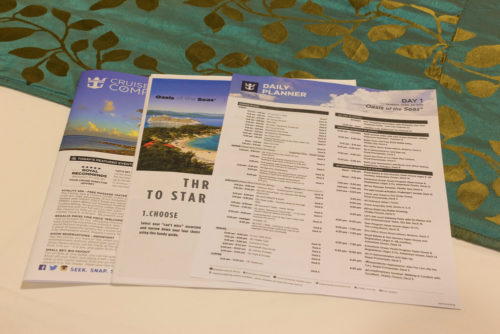
53. Know that all drinks already have gratuity included.
Whether you buy a drinks package or purchase beverages a la carte, whatever price you’re paying will include 15% to 18% gratuity. This may or may not be obvious. And, even though a gratuity is already included, there may still be a “tip” line on your receipt. You are, of course, free to add more.
54. Know that all spa services also already have the gratuity included.
See above. There’s lots of reasons you may want to increase the gratuity, but just be aware that you won’t be starting from ground zero.
55. Give formal night a try.
There will also be one or two evenings that are designated as formal nights. First time cruisers are sometimes intimidated by formal night, but it’s not quite as formal as it sounds. For better or worse, cruise lines have become way more flexible as to what is appropriate dress for formal night. This is a nice opportunity for dress up family pictures.
56. Look at disembarkation info when it arrives. Don’t wait.
First time cruisers should be aware that you need to start preparing for disembarkation before the day actually arrives, if you want to disembark with ease.
The day before your last full day on board, you should receive detailed information about the cruise line’s disembarkation procedures. Actually make a point to read this. This information explains how your luggage will be handled, where you will be able to have breakfast, and where you can wait for your disembark group to be called. You will also learn about any required customs forms or other special port procedures.
57. Check on bill before day before last day.
At the end of the cruise, you will be provided with a copy of the charges that have been made to your ship account. First time cruisers may be surprised the first time they see their bill. It will likely be longer than expected and have a higher bottom line.
You will inevitably see a very long line at guest services on the last day as people try to make adjustments or have issues with their bill. You can avoid that line. Make a point of getting a copy of your bill midway through the trip to try and catch any problems early. As with a land-based hotel, you may be able to access a copy of your bill on the television in your stateroom.
58. Book next cruise while still on-board.
Once you are on-board, you should consider booking another cruise for next year. The on-board “future cruise” or “next cruise” desk offers some of the best deals available to repeat customers. These deals often include reduced deposits – or essentially free deposits, fare discounts, and on-board credit that could be available immediately (as in on the current cruise).
FIRST TIME CRUISE TIPS: DISEMBARKATION
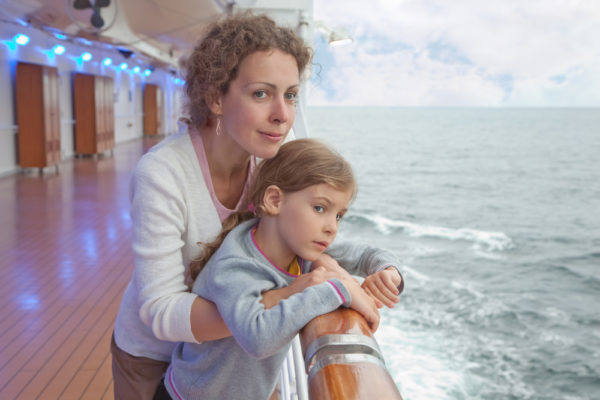
59. Don’t forget to reclaim any confiscated items.
If you purchased alcohol during one of the port calls, it will likely have been taken from you and stored (if it was noticed). Likewise, if you purchased or carried on some other prohibited item, the ship security folks would have kept it and give you some type of receipt. The idea is that you are supposed to reclaim your items on the last day. Don’t forget to do so.
60. Make sure your cruise account is paid up before trying to disembark.
This is another first time cruise tip about your bill. A final bill will usually be delivered to your stateroom during the last 24 hours you are on ship. Make sure that it’s set up to be paid successfully. So, for instance, whatever credit card you have on file should not have expired while you were sailing. And, whatever the final amount of the bill may be does not exceed your credit limit.
What you want to avoid happening is waiting in a long line to disembark, getting to that moment where you swipe your cruise card for the final time, and being turned back by security because there’s an issue with your account.
Related tip for first time cruisers sailing on back-to-back cruises: Don’t assume that the credit card information that you supplied for the first part of your journey will automatically transfer to the final leg. It most likely will, but if it doesn’t – see above.
61. Plan to have a disembarkation bag.
Unless you are walking off the ship with your luggage, you will need to have everything packed up on the last night of your cruise and placed outside your stateroom by a designated time. Since you will not have access to your luggage again until after you have left the ship, you need to plan for a disembarkation bag.
It’s a small bag that you use to store all of the stuff that couldn’t make it into your luggage the night before. So, for instance, you will need to leave out whatever sleepwear your family needs, your outfits for the next day, and any required toiletries.
When you get ready to leave on the final morning, you will need a bag to store all of this stuff, as well as any last minute items you may have acquired. A disembarkation bag is also a great place to store small activities that will entertain your kids during various waiting periods.
This first time cruise tip is similar to one of the embarkation tips, and it’s possible you could use the same bag for both.

62. Make prior arrangements for ground transportation to ease your departure.
You should have a concrete plan for getting from the cruise terminal to the airport or hotel if you are staying over. This first time cruise tip is similar to one about starting your cruise. But it has even more importance at the end of your cruise.
There will literally be thousands of people disembarking during a relatively short time period. Even if you don’t have to rush and catch a plane, standing in a long taxi line in the heat surrounded by your luggage and small children is not a fun way to end your vacation.
The cruise line will offer a shuttle service (for a fee) that will consist of a large bus. You can book this while onboard, but you will need to make reservations in advance. You can also arrange for a car service or van service to pick you up and take you to your hotel or the airport. This can be an ideal option when you are traveling with lots of luggage.
Depending on the size of your party, a private transport can actually be cheaper overall than the multiple per person fees assessed for the cruise line shuttle.
63. Fill out the evaluation form.
After you leave the ship, you will receive a request from the cruise line to complete an evaluation form. Complete it if you can. They really do act on the feedback received from passengers. You can help make future cruises better for yourself and others. And, you can help make sure that stand out staff are appropriately recognized.
That said, if you have a particular problem or complaint that requires a response, you should write a separate letter so that someone from the cruise line can follow up with you individually.
Keep up with the latest cruise tips and insights! Follow us on Pinterest:


